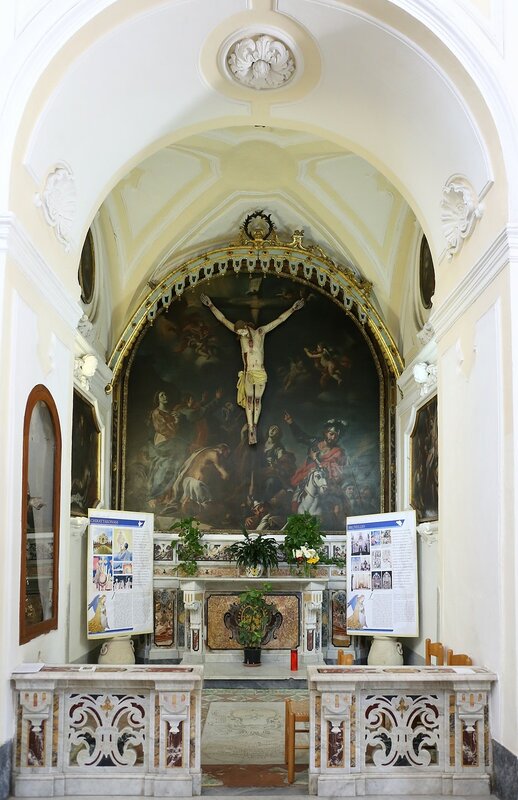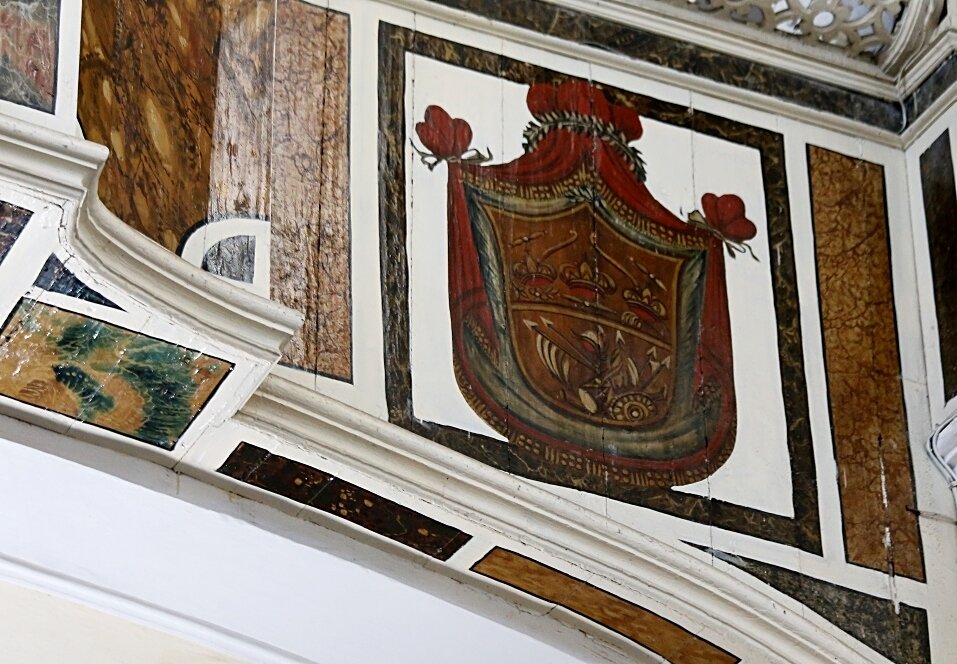Forio. The Church of St. Francis (Chiesa di San Francesco d'Assisi)
Between City hall and the Basilica of Santa Maria Visitapovery located a unremarkable Church of San Francisco (map). The truth is, I accidentally looked at her, all attention was drawn to the graceful lines of the neighboring temple. It is assumed that the original facade had a pediment and decoration in the Baroque style and was destroyed in 1809. At that time the king of Naples was Napoleon's Marshal Joachim Murat, believed that monasteries should not have architectural embellishments.

history of the Church began during the plague, or, as they called it then, a deadly plague that struck the island in the early 17th century - in the name of salvation from the deadly disease by the inhabitants of Forio, was given a vow to build a temple. To Finance construction, the city Council has imposed a tax on the sale of wine.

In those days the city had a great influence of the Franciscan convent, therefore, the Church was built under it. The temple was built in 1646, and took the name of St. Francis.

the Building was constructed of tufa, the interiors are richly decorated with stucco, floors and patterned ceramic tiles.

looks Especially impressive vaulted ceiling, decorated with plaster flowers and angels.

Two hands on the background of the cross - the emblem of the Franciscan order. One hand belongs to Christ, the other Francis. This symbol expresses the idea and purpose of Franciscan spirituality: the imitation of Christ, which should be permanent and last a lifetime.

In 1745, the temple was an altar of white marble. Behind the altar you can see the tight end of the 17th century, depicting the virgin Mary, instructing Francis. The picture painted by Giuseppe Simonelli, a student of a famous Neapolitan painter Luca Giordano.

shaped window above the altar with a stained-glass window depicting the descent from the cross.

right Above the altar of the second chapel is one of the most interesting monuments of painting, represented on the island. The picture of the Evangelist Schiano datirovannaja 1777 year, represents the culmination of the crucifixion. Later on the canvas superimposed sculpture of Jesus by an unknown author.

On the side walls of the second chapel of the left, you can see two works by the artist Ceppaloni - the Annunciation and Christmas.

Originally walls were painted by the painter Filippo Balbi, but after renovation in 1935, the frescos were irretrievably lost.

1866 the monastery was abolished, and the building since that time and currently holds the city administration, and the Church became a parish Church.
